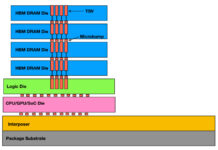Commissioned: It’s a familiar trend: Amid economic uncertainty, IT leaders seek creative ways to manage costs while improving operational efficiency and business outcomes. One such practice includes optimizing cloud strategy with a more strategic touch for placing application workloads.
Yet therein lies a needle that requires delicate threading. For as IT leaders optimize their workloads, they must also reconcile the fundamental challenge of managing their sprawling IT estates. That is, IT departments have a multicloud management problem.
To bolster performance and reduce latency, IT managers have put tech resources closer to applications and data. Which means running workloads across a range of public and private clouds, on-premises, collocations and edge environments.
These multicloud hodgepodges, with their breadth of commodity and differentiated services, pose big resource burdens that threaten to thwart CIOs’ bids for curbing cloud costs.
Here we explore three key hurdles to managing multicloud estates—as well as a potential path IT departments can take to mitigate the challenges.
Creeping cloud sprawl. Many IT departments run two or more public clouds, with some running in different availability zones and with full disaster recovery. Each cloud solution features its own management tools.
Even if CIOs are lucky enough to hire staff certified to work with different cloud solutions, optimizing each one is challenging. Factor in the on-premises systems, private clouds, colos and edge devices and systems are ripe for poor optimization and misconfiguration, which denigrates application performance.
Best-of-breed approach adds to complexity. To get the best performance at the lowest cost, some organizations resort to creating abstraction layers—a kind of cloud infrastructure jujitsu. In such instances, enterprises may pair compute resources from one cloud provider with the analytics capabilities of another, according to Forrester Research analyst Tracy Woo.
Examples of this can be found across artificial intelligence, machine learning and high-performance computing workloads, among others. While this best-of-breed approach to portability affords organizations flexibility in where they choose to run workloads, it also begets complexity—with potentially serious consequences.
Complexity is the enemy of security. With IT departments juggling multiple clouds, abstraction layers and on-premises systems, the resulting complexity broadens the cyberattack surface. For example, misconfigured systems can leave holes hackers may exploit. Incursions into multiple systems—on or off-premises—can pose existential threats for businesses.
Fears about cybersecurity attacks rank among the biggest concerns for IT leaders shepherding multicloud strategies.
Methods to mitigate multicloud management madness
Those are just a few of the major challenges haunting CIOs’ dreams.
To sleep better, CIOs try to consolidate management of cloud and other IT services in a single dashboard. Such consoles help facilitate resource deployment, including such critical functions as adding additional compute or storage capacity, as well as monitoring the performance of workloads.
In fact, 83 percent of 514 IT decision makers agree that implementing a unified console to manage their organization’s cloud and IT services in one place would help them better achieve their business outcomes, according to a Forrester research report commissioned by Dell Technologies.
Consoles alone aren’t the answer. A broader blueprint for managing multicloud environments exists in taking a more intentional approach to designing and building IT estates. This requires organizations to consider optimal locations to run different workloads.
It also means creating a consistent cloud experience by leveraging the best practices of modern IT architecture such as automation, self-provisioning and rapid deployment. Such an experience makes acquiring compute and storage as easy as subscribing to online consumer services while providing more predictability in operating the critical systems that fuel your business.
This approach also enables you to quickly order and provision resources with ease and agility while maintaining control to help you comply with governance security requirements. So you get more control over your data, from where it is located, to who can access it and how it is protected.
We created our Dell APEX portfolio of as-a-Service solutions to support your existing and emerging technology needs so you can operate consistently no matter where you are—the data center, public clouds, colocation facilities, or at the edge.
So you can focus on driving innovation and delivering business outcomes—which is what CEOs and boards expect their IT leaders to do these days.
Learn more about our portfolio of cloud experiences delivering simplicity, agility and control as-a-service: Dell APEX.
Brought to you by Dell Technologies.







